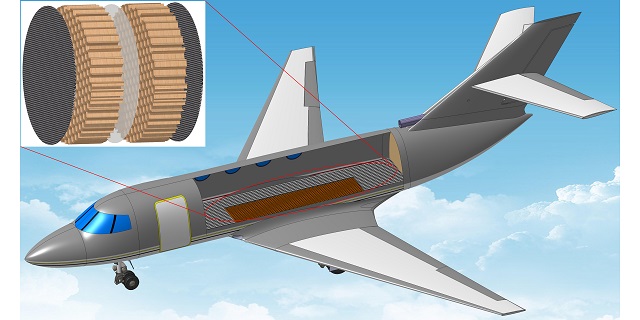 Researchers have developed membranes that can significantly reduce aircraft noise when inserted into the honeycomb structures used in aircraft design. Image credit: Yun Jing.
Researchers have developed membranes that can significantly reduce aircraft noise when inserted into the honeycomb structures used in aircraft design. Image credit: Yun Jing.
When flying passengers have to deal with noise throughout the flight. Researchers from North Carolina State University and MIT have partnered together to create a membrane which can be added into the aircraft structure to significantly decrease low-frequency noise that enters the cabin.
“This design is promising for making structures that are strong, lightweight, and sound-proof.
Yun Jing, an assistant professor of mechanical and aerospace engineering at NC State
The wings and cabins of aircraft are designed with light materials, which normally have a honeycomb-like structure. The ceiling and floor of most airplane cabins use this material. The purpose of using a sandwiched honeycomb structure is to provide strength, and the lightweight feature enables the aircraft to save on fuel.
However, low-frequency noise created by the aircraft engine cannot be blocked using honeycomb structures. The initial thought was to add insulation materials to reduce the noise, but this would greatly increase the overall weight of the aircraft, thereby rendering it less fuel efficient.
The NC State and MIT team developed a possible solution for this issue by developing a thin, lightweight membrane to cover a side of the honeycomb structure. This membrane is similar to a drum’s skin, and when sound waves strike it, they bounce off instead of penetrating through.
“It’s particularly effective against low-frequency noise. At low frequencies – sounds below 500Hertz – the honeycomb panel with the membrane blocks 100 to 1,000 times more sound energy than the panel without a membrane.
Yun Jing, an assistant professor of mechanical and aerospace engineering at NC State
The membrane is composed of rubber measuring approximately 0.25mm in thickness, and on the whole adds about 6% to the weight of the honeycomb panel.
“The membrane is relatively inexpensive to produce, and can be made of any material that does not impact the structural integrity of the honeycomb panel,” says Ni Sui, a Ph.D. student in Jing’s lab and lead author of the paper. “It could make flying much more pleasant for passengers –particularly in helicopters.”
The paper, “A Lightweight yet Sound-proof Honeycomb Acoustic Metamaterial,” is published online in Applied Physics Letters. Co-authors include Xiang Yan, Tai-Yun Huang, and Fuh-Gwo Yuan of NC State and Jun Xu of MIT. The work was supported in part by NC Space Grant.
References